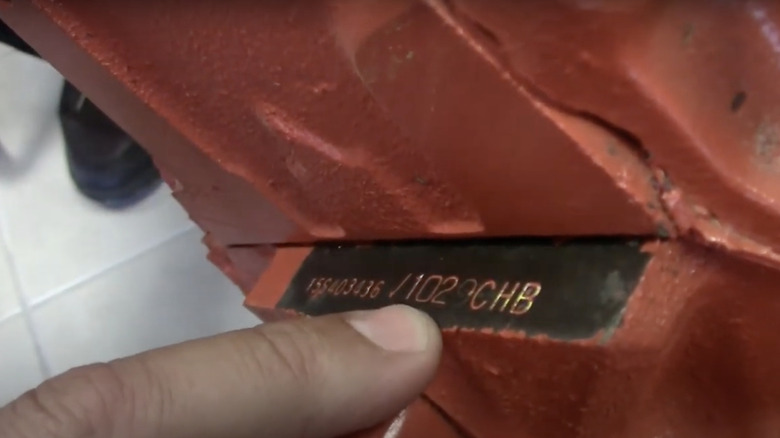What Do Matching Numbers Mean On A Corvette (And How To Tell If Your Car Has Them)
We may receive a commission on purchases made from links.
During the Corvette's early years, Chevy introduced a policy that would forever change the classic car game. Beginning in 1960, every Chevrolet left the factory with a number stamped on the engine that was derived from the one already assigned to the car's chassis. This helped later buyers and show judges gauge the originality of a car's components, a quality that lends authenticity and added value to any classic. This was especially important for Corvettes, which had been using four different versions of the 283-inch V8 since as early as 1957.
I have long held an affection for classic cars bordering on pathology. In my lifetime, I have daily driven a 1964 Plymouth Valiant convertible, a 1976 Jeep Wagoneer, a 1978 International Scout, a 1978 Jeep CJ7, a 1985 Nissan Pathfinder, two E36 BMW convertibles, and three first-generation Jeep Wranglers. I have also attended dozens of classic car shows and auctions and spent countless hours in online forums debating the merits of various models, powertrains, and road trip routes. Let's dig a little deeper into the Corvette generations that employ this engine numbering technique and how to tell if a specific model has original parts.
[Featured image by Radosław Drozdzewski via Wikimedia Commons | Cropped and scaled | CC-BY SA 4.0]
VIN tags on early Corvettes can be found in a few spots
American cars have been assigned a chassis identification number (more commonly known as the Vehicle Identification Number, or VIN), since the mid-1950s, but a visible VIN wasn't mandatory until 1969. Most cars now have the VIN printed on a metal plate on the driver's side of the dashboard. You should be able to read it from outside the car. There might also be a label with the VIN on the driver's door jamb, but you'll have to open the door to read it.
If you're going to search for and decode the numbers on your Corvette, a good resource is the Corvette Black Book by Michael Antonick. It's available from Amazon for $28.99, and the current edition covers model years 1953 through 2023. The Corvette Black Book has detailed information on each model year of the legendary sports car, including production figures, options and their corresponding codes, body, engine, and transmission serial numbers, and original sticker prices.
On C1 and C2 Corvettes, the VIN can be found either on the pillar at the front of the driver's door, on the steering column under the hood, or on a plate underneath the glove compartment. Later models have a VIN plate that should be visible through the windshield and a tag on the door jamb.
C3 Corvettes have a stamp pad on the engine block
On C3 Corvettes, there is a protruding stamp pad on the front passenger side of the engine block as seen in the photo above. The partial VIN stamped on the pad should correspond to the car's VIN; the other number on the pad provides information about where and when the engine was manufactured. You can compare the date codes there with the raised casting numbers on the block and heads. This can help you determine if the engine is indeed original to the car. You should also be able to find casting numbers on the transmission and rear differential, telling you if these components have been replaced during the 'Vette's lifetime.
Matching numbers will indicate that your Corvette has retained its original components over the years. This makes it especially valuable on the classic car market. Hagerty values a 1958 Corvette in good condition at a couple tanks of gas over $70,000, but a numbers-matching example can go for more than twice that.


